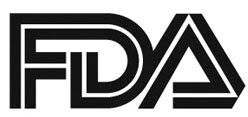FDA Extends Review Period for Frontline Atezolizumab Combo in Nonsquamous NSCLC
The review period has been extended by the FDA for a supplemental biologics license application for atezolizumab as a frontline treatment for patients with metastatic nonsquamous non–small cell lung cancer who do not have <em>EGFR</em> or <em>ALK</em> aberrations, in combination with carboplatin and nab-paclitaxel.

The review period has been extended by the FDA for a supplemental biologics license application (sBLA) for atezolizumab (Tecentriq) as a frontline treatment for patients with metastatic nonsquamous nonsmall cell lung cancer (NSCLC) who do not haveEGFRorALKaberrations, in combination with carboplatin and nab-paclitaxel (Abraxane).
The extension will allow ample time for the FDA to review additional information requested for the application, according to a press release from Roche (Genentech), the manufacturer of the PD-L1 inhibitor atezolizumab. December 2, 2019 is the new action date for the sBLA.
In the multicenter, open-label, randomized IMpower130 study, patients were randomized 2:1 to receive the atezolizumab triplet as induction therapy followed by maintenance atezolizumab, or chemotherapy alone followed by best supportive care or pemetrexed every 3 weeks as maintenance. Atezolizumab was administered until investigator-assessed loss of clinical benefit or toxicity, while chemotherapy was given until progressive disease or toxicity. Stratification factors included gender, baseline liver metastases, and PD-L1 expression.
The co-primary endpoints were progression-free survival (PFS) as assessed by investigator using RECIST v1.1 in patients withEGFRor ALKmutations in the intent-to-treat wild-type (ITT-WT) population, and OS in the ITT-WT population.
Findings of the interim analysis, which were presented at the 2018 ESMO Congress, showed that the atezolizumab arm was superior in OS in the ITT-WT population. The median OS was 18.6 months (95% CI, 16.0-21.2) versus 13.9 months (95% CI, 12.0-18.7) with carboplatin/nab-paclitaxel alone (HR, 0.79; 95% CI, 0.64-0.98;P= .033). The 1- and 2-year OS rates with atezolizumab were 63.1% and 39.6% versus 55.5% and 30.0% in the carboplatin/nab-paclitaxel arm.
Additionally, there was also an improvement in PFS with the atezolizumab combination; the median PFS was 7.0 months (95% CI, 6.2-7.3) and 5.5 months (95% CI, 4.4-5.9) for carboplatin/nab-paclitaxel alone (HR, 0.64; 95% CI, 0.54-0.77;P<.0001). The 6- and 12-month PFS rates also favored the atezolizumab arm at 56.1% and 29.1% versus 42.5% and 14.1% with chemotherapy.
Overall response rate (ORR) and median duration of response was 49.2% and 8.4 months (6.9-11.8) with the atezolizumab regimen versus 31.9% and 6.1 months (5.5-7.9) with chemotherapy (P= .0004). In the atezolizumab arm, the ORR consisted of a 2.5% complete response rate, 46.8% partial response rate, 30.4% stable disease rate, and 11% progressive disease rate. Responses were ongoing in 36.8% of patients on atezolizumab and 19.4% on chemotherapy.
The PFS benefit was observed across all prespecified subgroups, except for those with liver metastases (HR, 0.93; 95% CI, 0.59-1.47); this group also did not experience an OS benefit (HR, 1.04; 95% CI, 0.63-1.72).
Investigator-assessed PFS and OSS in the ITT population were similar to the ITT-WT population, with a median PFS of 7.0 months for atezolizumab and 5.6 months for carboplatin/nab-paclitaxel (HR, 0.65; 95% CI, 0.54-0.77;P<.0001). The 6- and 12-month PFS rates were 56.4% and 28.9% with atezolizumab and 42.9% and 14.2% for chemotherapy.
The median OS for the ITT group for atezolizumab and chemotherapy was 18.1 months and 13.9 months, respectively (HR, 0.80; 95% CI, 0.65-0.99;P= .039). Additionally, the 1- and 2-year OS rates in this group were 62.7% and 39.3% on the atezolizumab arm and 55.1% and 29.9% with carboplatin/nab-paclitaxel.
The PFS and OS benefits varied in theEGFR/ALK-positive subgroups; the median PFS was 7.0 months and 6.0 months with atezolizumab and carboplatin/nab-paclitaxel alone (HR, 0.75; 95% CI 0.36-1.54), respectively; median OS was 14.4 months and 10.0 months (HR, 0.98; 95% CI, 0.41-2.31).
PFS data were also reported by levels of high, low, and negative PD-L1 expression: high (6.4 vs 4.6 months; HR, 0.51; 95% CI, 0.34-0.77), low (8.3 vs 6.0 months; HR, 0.61; 95% CI, 0.43-0.85), and negative (6.2 vs 4.7 months; HR, 0.72; 0.56-0.91). For OS, the benefit was similar: high (17.3 vs 16.9 months; HR, 0.84; 95% CI, 0.51-1.39), low (23.7 vs 15.9 months; HR, 0.70; 95% CI, 0.45-1.08) and negative (15.2 vs 12.0 months; HR, 0.81; 95% CI, 0.61-1.08).
Regarding safety, the atezolizumab/chemotherapy regimen appeared consistent with the known safety profiles of each agent alone, and no new safety signals were observed with the combination. Grade 3/4 treatment-related adverse events (AEs) were reported in 73.2% of patients who received the atezolizumab regimen compared with 60.3% of those who received chemotherapy alone. Ones of special interest include colitis (n = 5), hypothyroidism (n = 3), hepatitis (n = 2), and diabetes mellitus (n = 2). Serious grade 3/4 TRAEs were doubled in the atezolizumab arm at 23.7% versus 12.9%, and AEs leading to dose interruptions occurred in 85.0% and 80.2% of patients.
In December 2018, the FDA approved atezolizumab in combination with bevacizumab (Avastin), carboplatin, and paclitaxel for the frontline treatment of patients with metastatic nonsquamous NSCLC with noEGFRor ALKgenomic tumor aberrations.
Reference:
Cappuzzo F, McCleod M, Hussein M, et al. IMpower130: progression-free survival (PFS) and safety analysis from a randomised phase 3 study of carboplatin + nab-paclitaxel (CnP) with or without atezolizumab (atezo) as first-line (1L) therapy in advanced non-squamous NSCLC. In: Proceedings from the 2018 ESMO Congress; October 19-23, 2018; Munich, Germany. Abstract LBA53.
In January 2019, Roche reported that the FDA had granted a priority review to the sBLA based on findings from the phase III IMpower130 trial. The study demonstrated a statistically significant improvement in both progression-free and overall survival (OS) with the atezolizumab triplet compared with chemotherapy alone in patients with stage IV nonsquamous NSCLC.